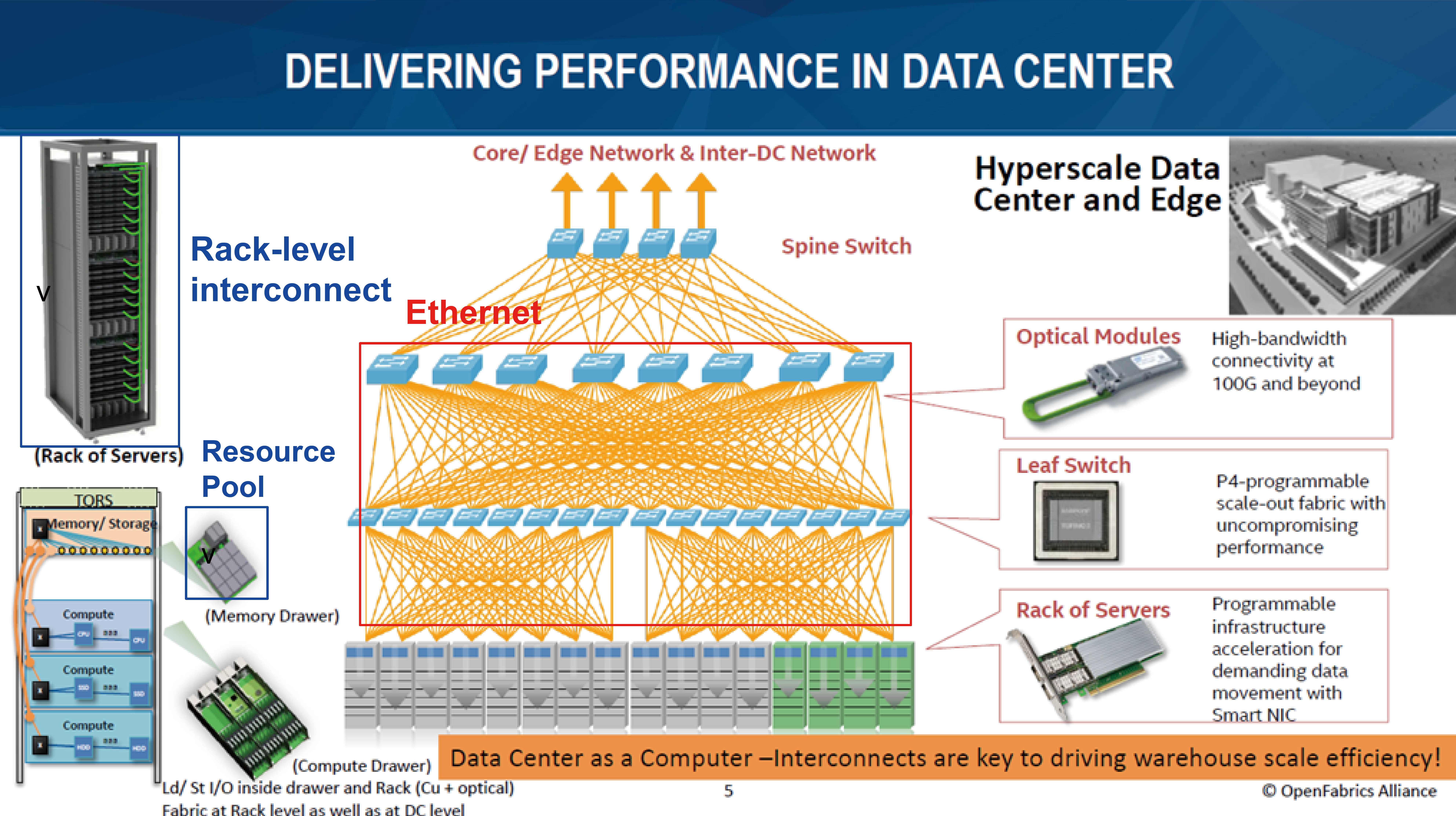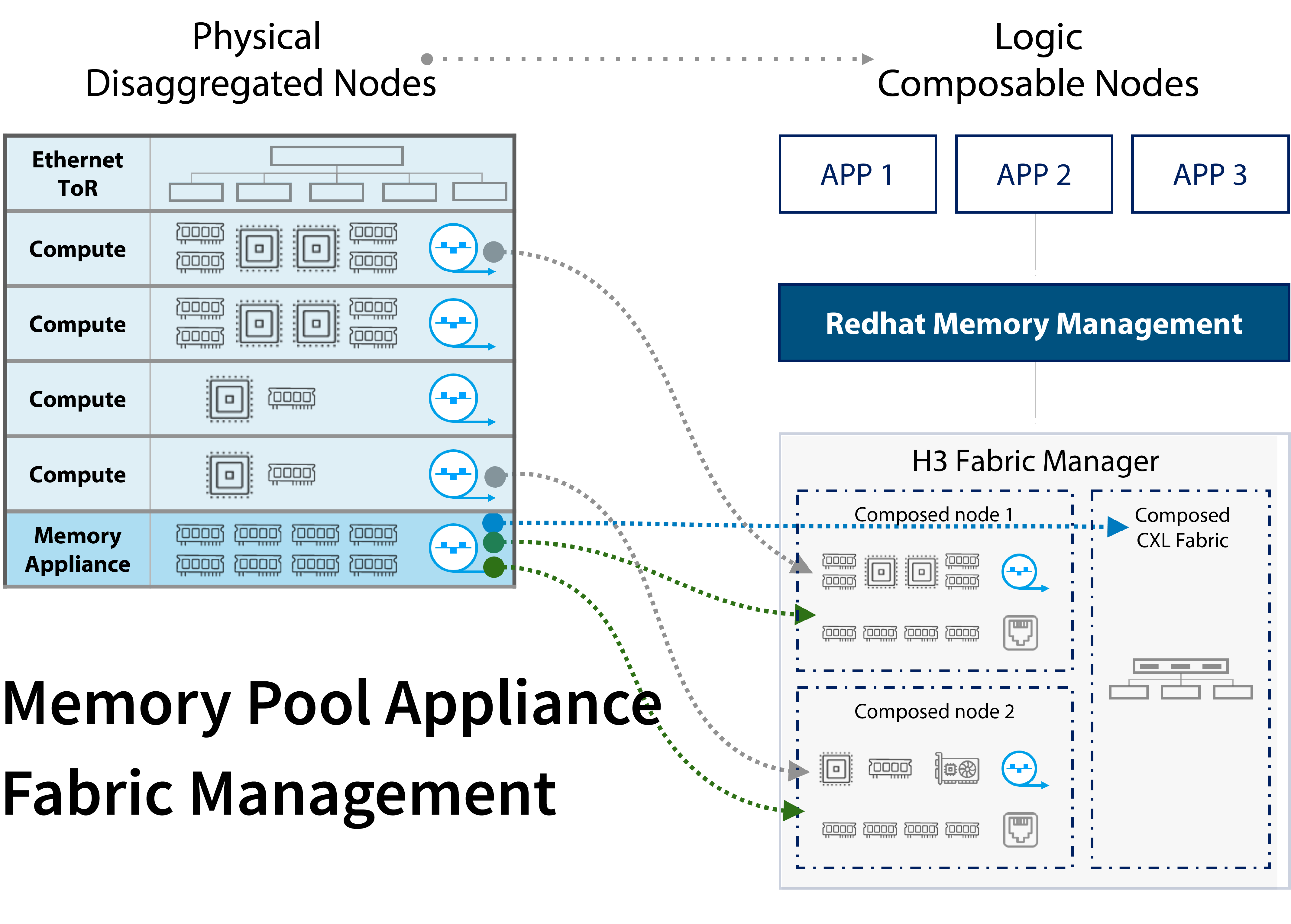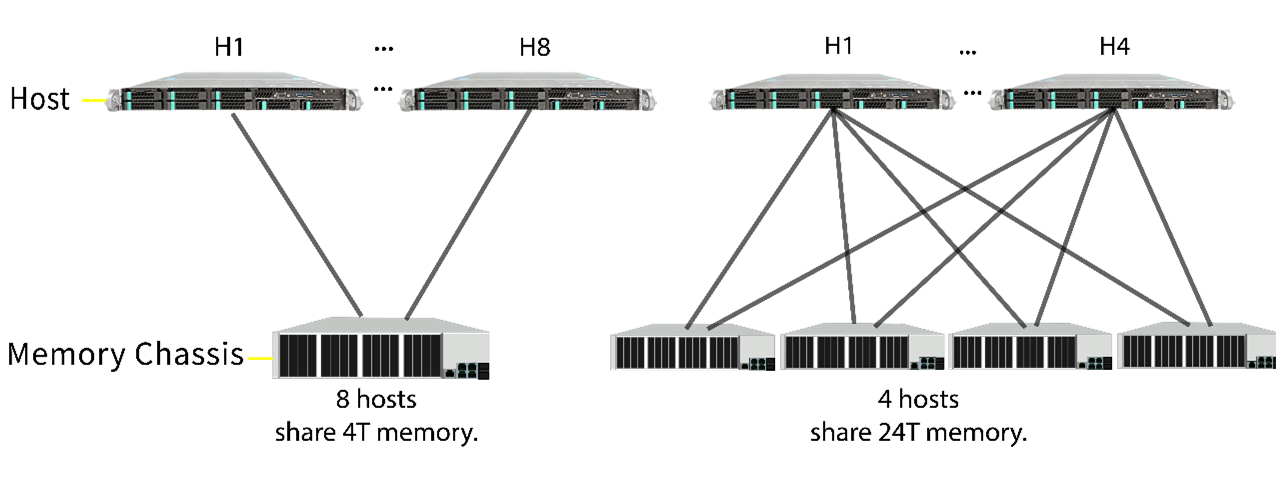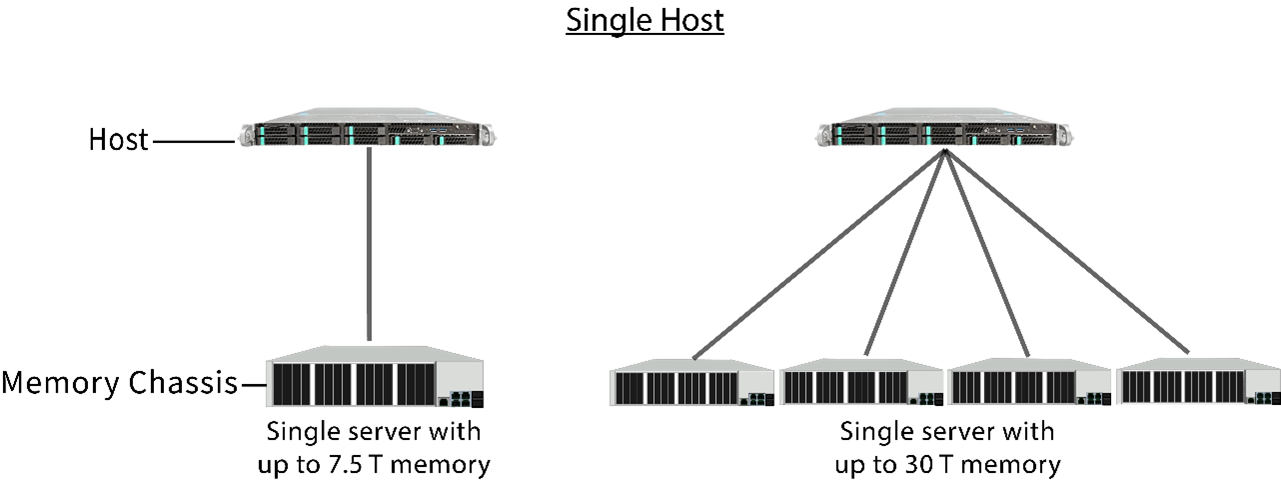CXL2.0 Memory Pooling Solution by H3
Announce the coming CXL 2.0 composable solution.

In this blog, I'll explore why people expect
CXL (Compute Express Link) to become the mainstream choice for memory
pooling systems. With the ever-growing cloud infrastructure, widespread 5G
network deployment, and explosive demand for artificial intelligence
applications, the demands for memory also has increased. The cost of memory has
also risen sharply. Finding a solution to reduce the cost of memory to help
with this problem became a top priority.
Research shows that memory costs continue to
increase as a percentage of server overhead. In 2012, memory costs accounted
for 15% of server overhead, but in 2021, this proportion soared to 37%. Such
rising costs challenge hyperscalers like Amazon, Azure, Google, and Meta.
Therefore, they actively promote measures to reduce memory overhead, which has
forced them to adopt CXL. With the solid financial backup and commitment of
cloud hyper-scale computing players such as AWS, Azure, and Google, the CXL
consortium was finally formed in this trend. The current development status of
the CXL Consortium includes major CPU suppliers, CXL memory module
manufacturers, and system suppliers. Next, I will introduce Intel's vision for
computing.
The picture below is Intel's vision for
computing. The red box is ethernet and is responsible for communication across
racks. The blue box is responsible for communication within the rack level,
which is the most intriguing part of CXL. Memory is separated from compute
nodes. All of these chassis connect via CXL. Intel believes that all resources
can be composable. CPUs are in the compute nodes. Memories are in the memory
pool. Storages are in separate chassis. GPUs/FPGAs are in the accelerator box.
It is the infrastructure that can be disaggregated or disassembled.


The rack level is the same as the picture on
the left. Computes and memory nodes are housed in separate chassis and
connected by PCIe Gen5 external cables. When memory gets allocated to a
connected host, the server sees this CXL memory as its own. The figure on the
right visualizes the Logic Composable Nodes, where the memories stand by for
different application uses. CXL Memory can be allocated to connected servers when needed and unmapped when no longer in use.

CXL Pooling and Sharing Topology
The figure on the right stands for the system
architecture of the memory pool. The left one portrays the system architecture
of memory sharing.

CXL Expansion Topology
This picture represents the Memory expansion
system. Memory expansion can be one or more of the memory systems.
The video is about CXL GUI demo. This video
demonstrates how to do memory pooling. Four ports are configured for hosts and
twelve ports for CXL memories in the system.
When dividing the CXL memory modules into
smaller memory blocks, you may click on the CXL memory module to create some. When configuring a memory block, you can select the size of the
memory block and its attributes, such as 'shared' or
'private.' If the memory block is assigned as 'shared,' multiple hosts can
perform read and write operations on the memory block. Note, however, that we
do not manage cache coherency.
Then you may check out from the hosts' view.
When clicking on a host port, the memory block on the right belongs to that
host. The memory block in the middle is available for the host to use. If
memory blocks are shareable, these memory blocks can be mapped to multiple
hosts. On the top bar, the Host Memory Address is the host memory address and
which memory blocks are allocated to which memory section. This GUI is
installed on the management CPU.
Will CXL become the mainstream technology in
the future? Efficient resource management facilitated by CXL has answered this question by analyzing the memory pool architecture and presenting a GUI
demonstration. The CXL switch plays a significant role in configuring switch
ports and memory mapping. The GUI demo shows the memory modules divided into
smaller memory blocks. The user can select the size and properties of the
memory block, including options for shared or private memory. The GUI makes it
easy for users to view and manage memory blocks.
Computer Express Link (CXL), as the
mainstream choice of the memory disaggregation system, has a promising future.
Backed by growing memory demand and the support of key industry players, CXL is
poised to revolutionize memory management. Its compatibility with existing
software is an influential advantage for hyperscalers. The efforts of the CXL
Consortium, coupled with advances in memory pooling and sharing technologies,
demonstrate the potential of CXL to transform computing architecture.